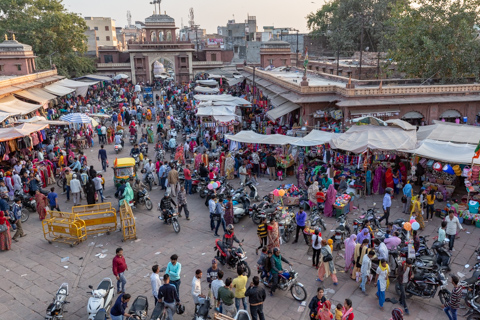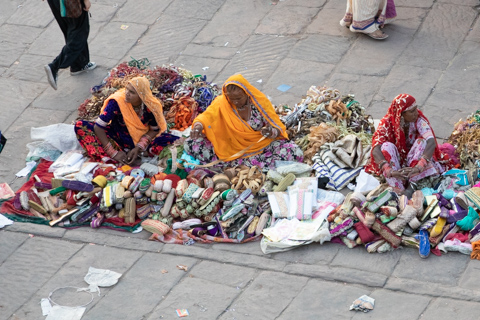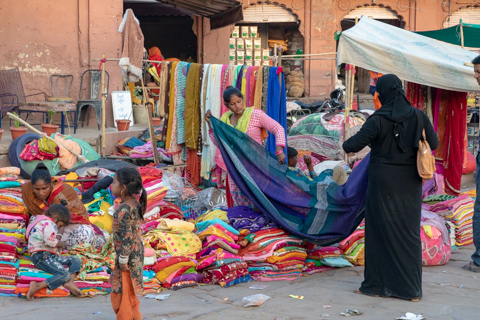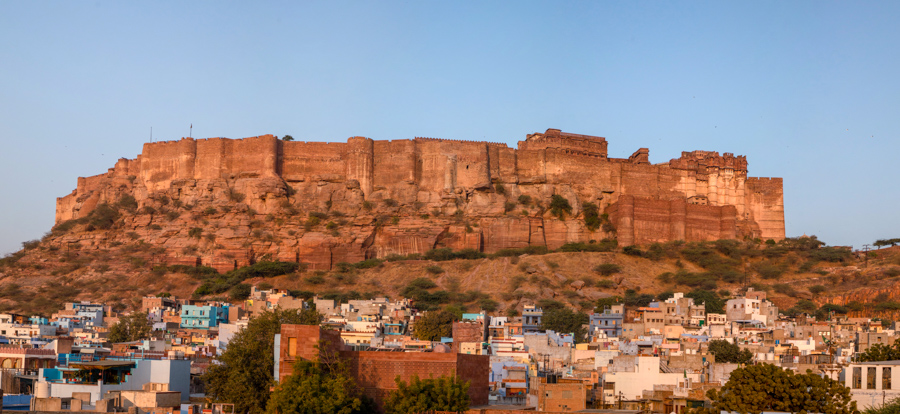

From our hotel room, we awoke to the beautiful sound of early morning Muslim prayers coming from a Mosque near our hotel.
The fort was not open so we went to Jaswant Thada - just as it was opening. It was nice to be there
before the big crowds.
The Jaswant Thada is a tomb built by Maharaja Sardar Singh in 1899 in
memory of his father, Maharaja Jaswant Singh II, and serves as the cremation ground for the royal family of
Marwar.
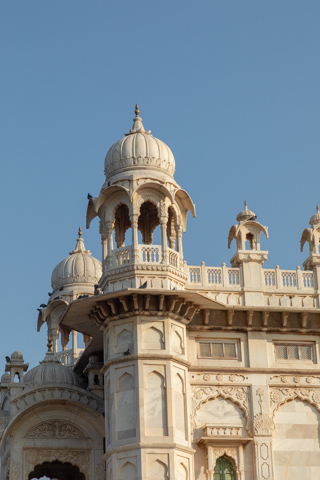
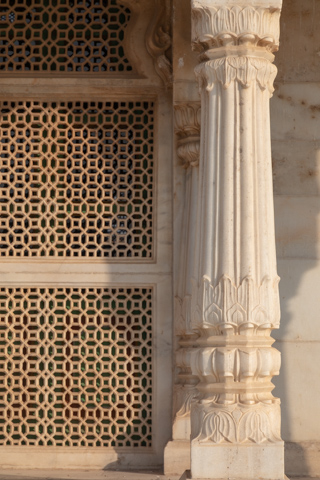
Marble column next to a screen carved out of marble - these lattice like screens are called jalis


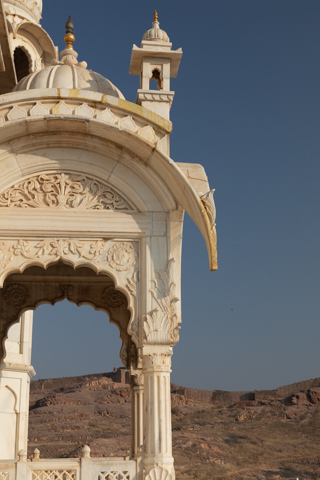
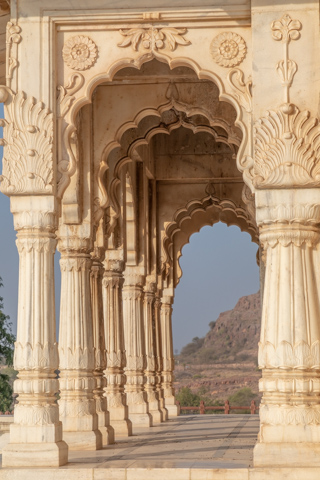
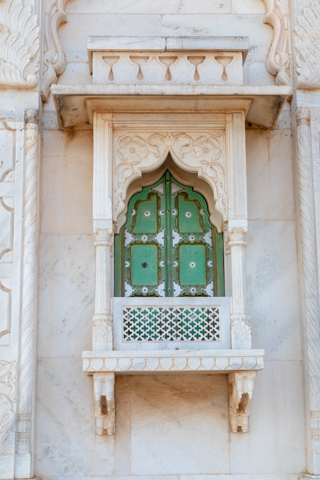
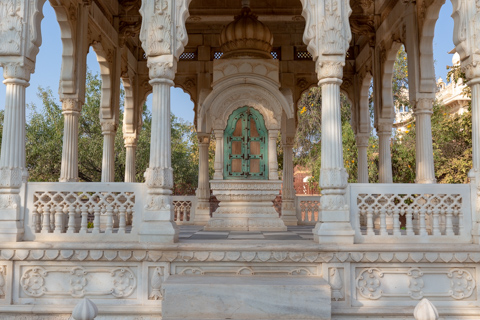
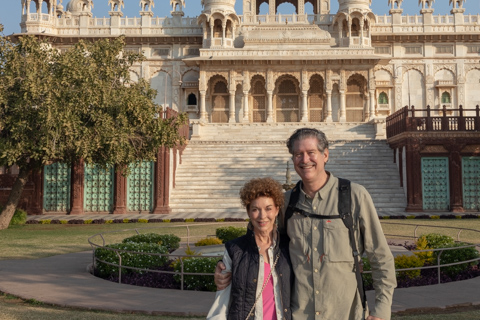


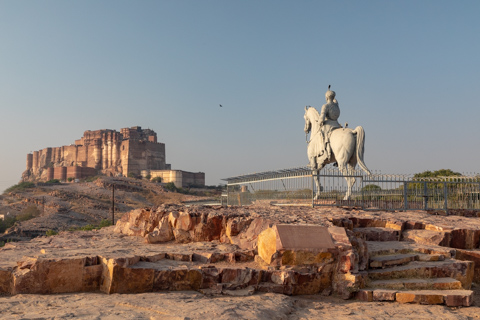
This is a statue of Rao Jodha pointing to Mehrangarh Fort he built in 1460
Here you see the founder of the palace, "Jodhpur" on horseback pointing toward the residence. The Royal
Family were avid horsemen and played polo.
The riding britches we know of today referred to as "jodhpurs" were designed and created by original
groomsmen.
These pants are still hand stitched and available for purchase in the shops of Jodhpur.
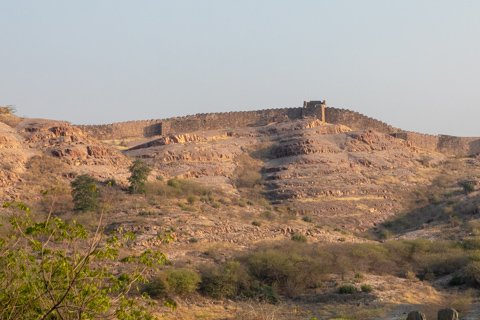
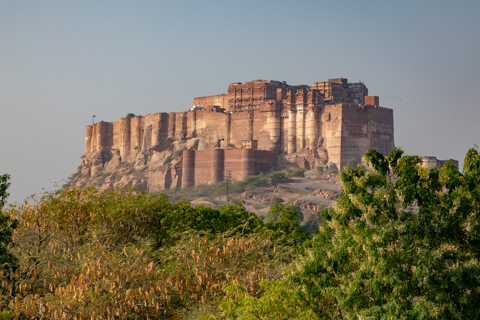
The living quarters - the "palace" are the decorated towers on the right.
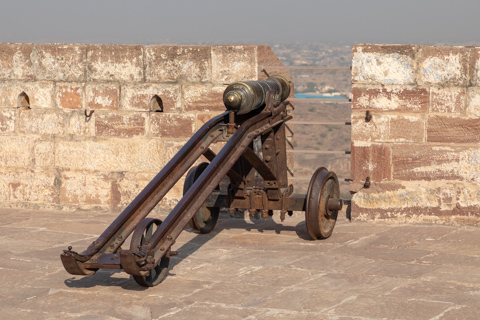
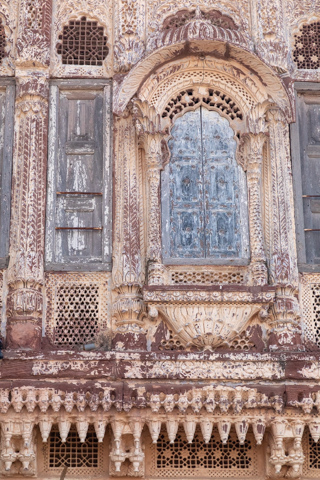
There were several Palanquins used to carry the royal family through the city.
We saw Ankush which are sticks to guide the elephant by touching its forehead.
Palace interior - beautiful stone work in the king's living quarters...
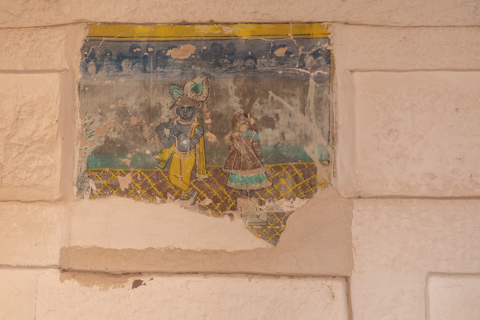
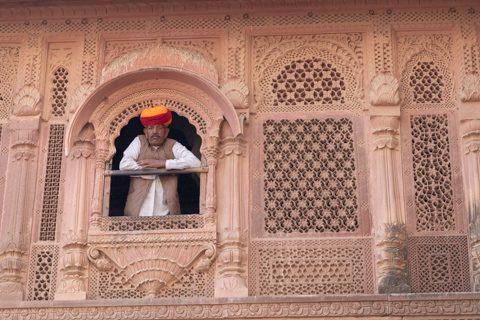
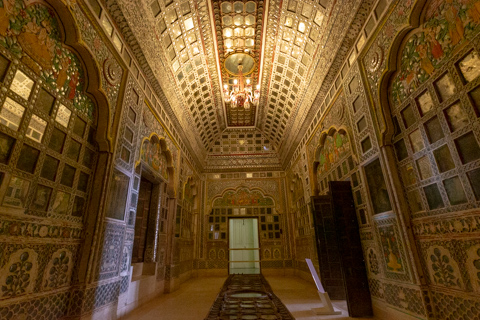
Challenging to photograph as there is a tiny opening to see the room
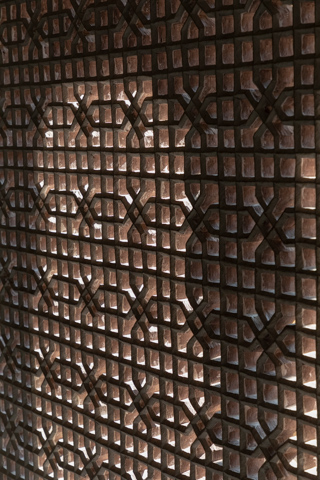
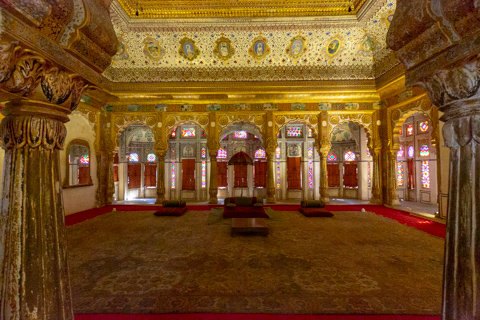
The hall probably served the purpose of a pleasure dome of the Maharajas, and the female dancers used to stay here. Accordingly, the room was made to look as beautiful as a magnificent flower, which earned it the name Phool mahal. The ceiling has golden filigree work, for which it is said, gold was brought from Gujarat.
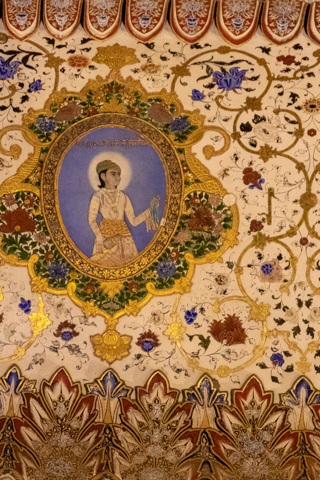
Paintings on the wall in the Throne Room
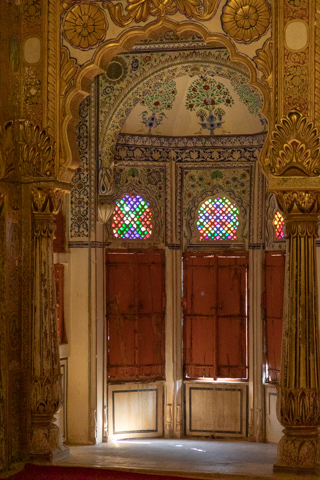
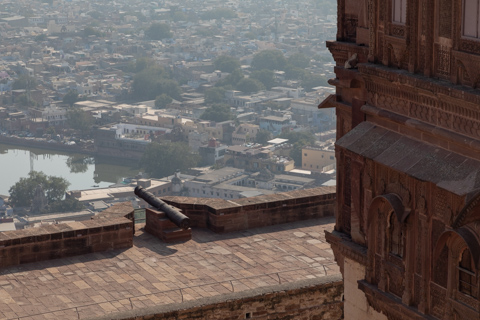
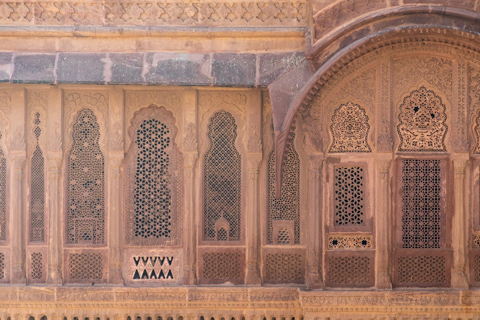
Note that no two screens are alike - and all carved out of stone
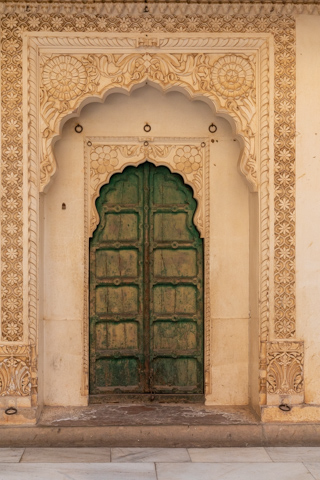
Palace door near the Palace shop
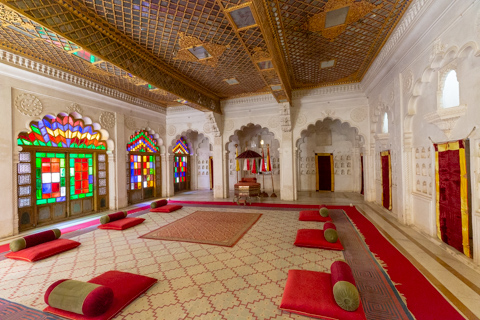
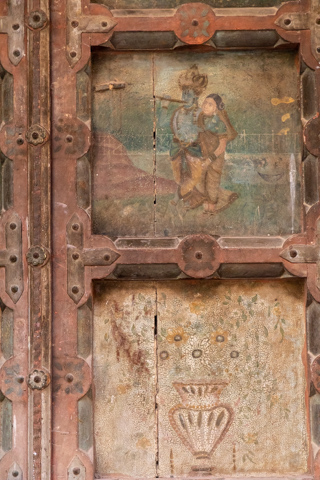
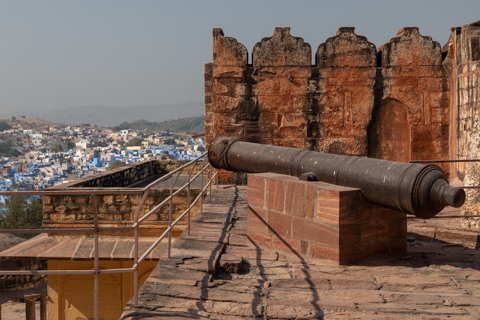

One of the world's largest private residences. Taj Hotels manage a part of the palace. Named after Maharaja Umaid Singh, grandfather of the present owner Gaj Singh. The palace has 347 rooms and is the principal residence of the former Jodhpur royal family. A part of the palace is a museum.
Ground was broken on 18 November 1929 by Maharaja Umaid Singh and the construction work was completed in 1943. The Palace was built to provide employment to thousands of people during the time of famine.
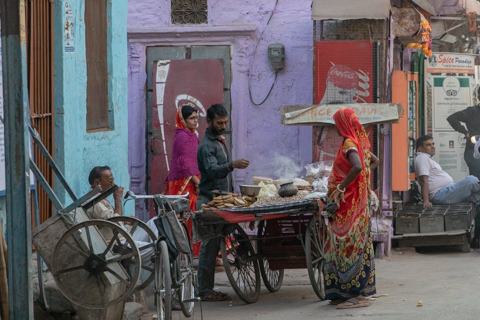
A woman purchasing food from a street vendor.

